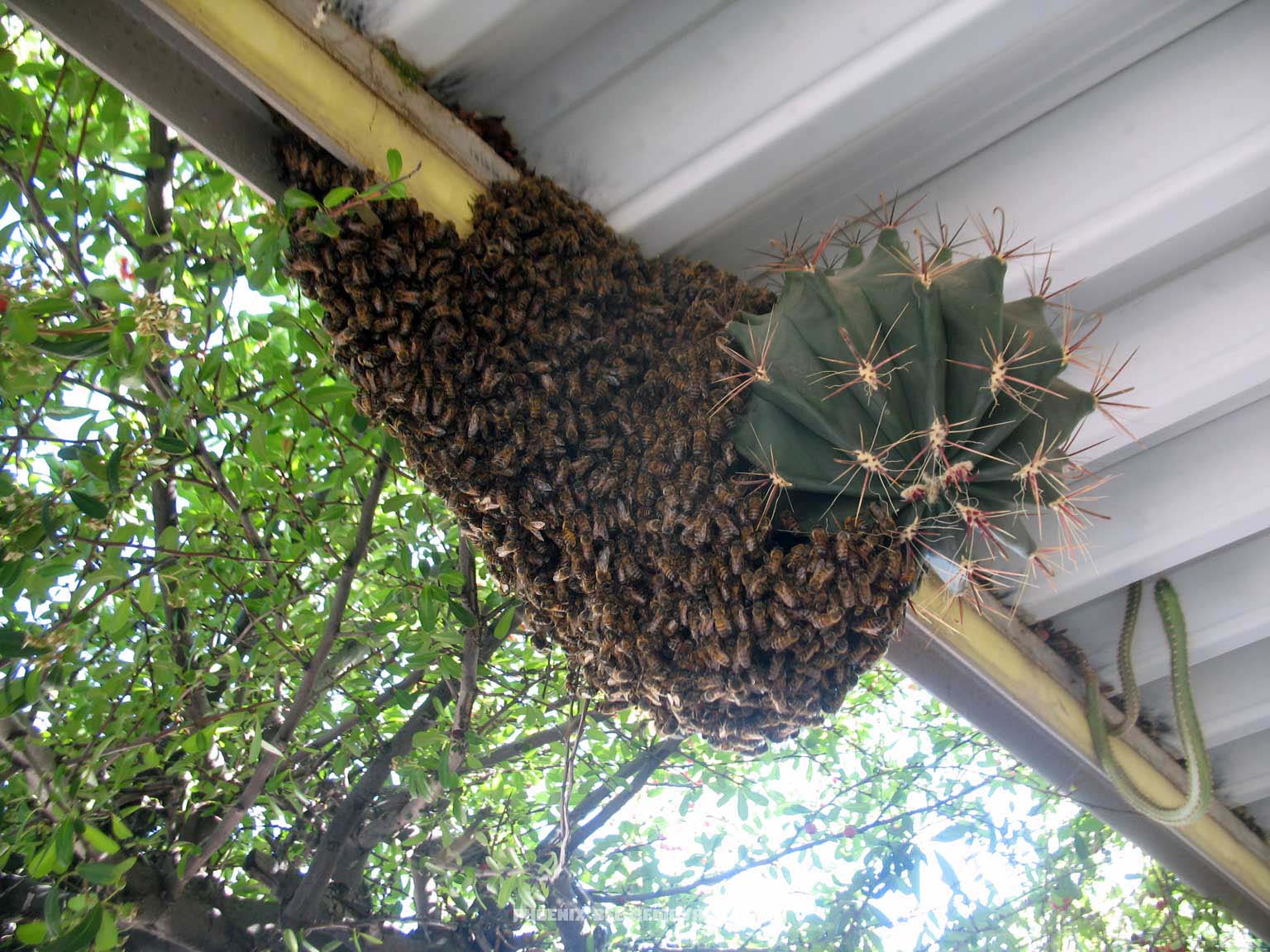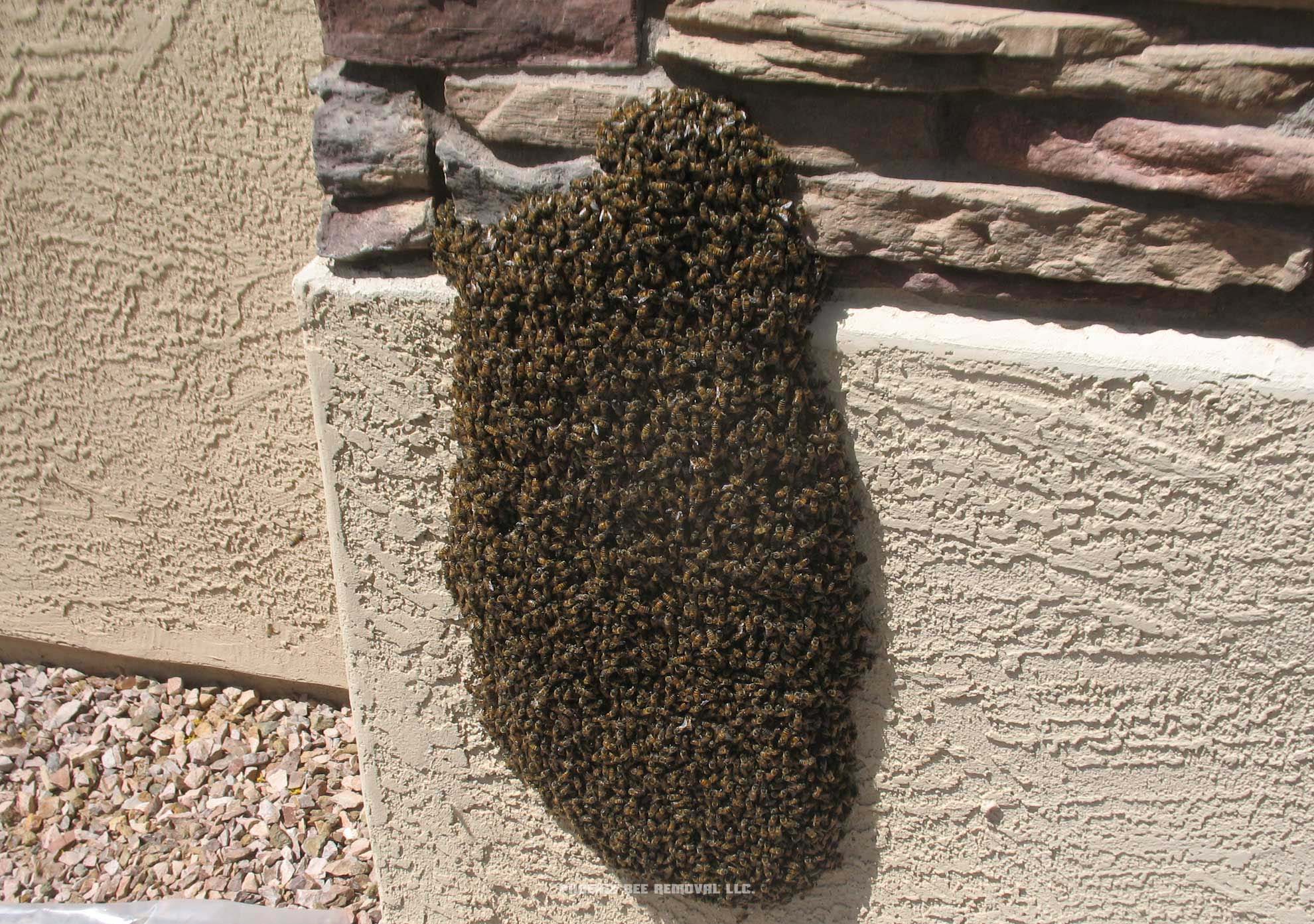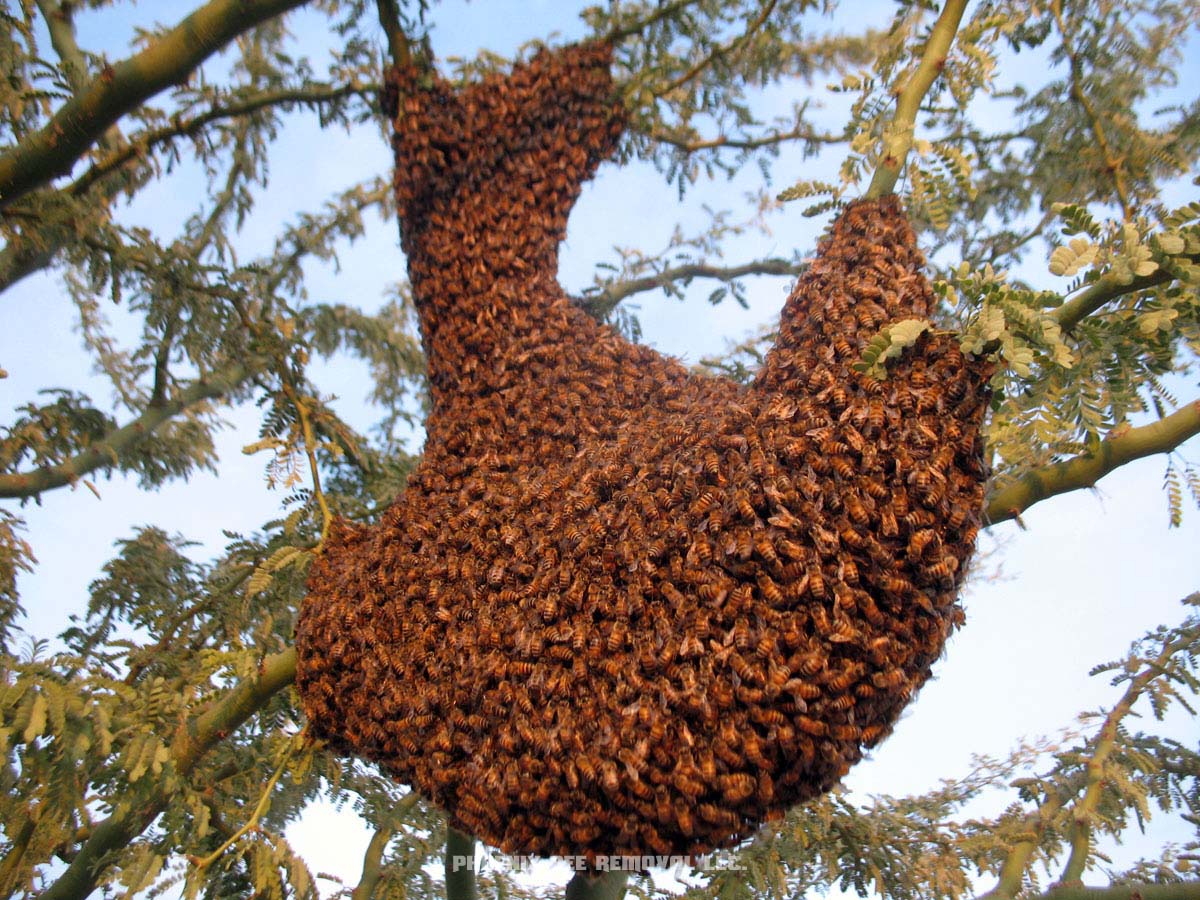There are a number of reasons honey bees may find the need to swarm. In Arizona, feral honey bees can swarm multiple times a year during the spring and summer months.
Honeybees detect the need to swarm and start a new colony for one or more of the following reasons:
- The colony is too congested in their current hive. There is not enough room for the queen to lay more eggs and/or for the worker bees to store more honey and pollen in the honeycomb.
- The queen has become weak with age, so she is not laying enough eggs or giving off enough pheromone scent to properly control the colony. This condition may also trigger superseding, which does not usually result in swarming.
- The queen is missing.
- Prolonged periods of bad weather (rainfall, etc.) restrict the bees to the hive and cause congestion and lack of foraging activity.
- The queen is genetically defective, which can inactivate nurse bees, cause a higher genetic tendency to swarm, lower queen pheromone production, or cause poor egg-laying activity or sporadic egg-laying, resulting in an uneven distribution of honeybee castes. This condition may also trigger supersedure, which does not usually result in swarming.
- Poor ventilation, resulting in higher-than-normal moisture levels or temperatures inside the hive
- Lack of food or water supply.
- Disease or pest infestation; these conditions may also trigger superseding, which does not usually result in swarming.





